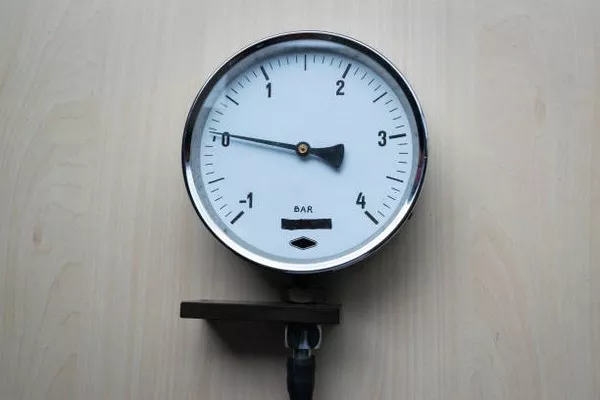A barometer, an essential instrument for measuring atmospheric pressure, plays a crucial role in various fields such as meteorology, aviation, and even everyday weather forecasting. Correct placement of a barometer is paramount to obtaining accurate readings that can aid in predicting weather changes and understanding atmospheric dynamics. This article explores the optimal placement of barometers and the reasons behind these recommendations.
Understanding Barometers
Before delving into placement specifics, it’s essential to grasp the basic functioning of a barometer. A barometer measures atmospheric pressure, which is the force exerted by the weight of air molecules above a particular location on Earth’s surface. This measurement helps meteorologists and other professionals gauge changes in weather patterns and predict upcoming weather conditions.
There are two primary types of barometers: mercury and aneroid. Mercury barometers use a column of mercury in a glass tube, where changes in pressure cause the mercury level to rise or fall. Aneroid barometers, on the other hand, use a flexible metal box that expands or contracts with changing pressure, which is then displayed on a dial.
Optimal Placement Considerations
The accuracy of barometric readings depends significantly on where the instrument is placed relative to its surroundings. Several factors influence where a barometer should ideally be located:
1. Avoiding Direct Sunlight
Direct sunlight can heat the barometer and its immediate surroundings, causing inaccurate readings due to thermal expansion. Heat can also affect the internal components of the instrument, leading to further inaccuracies. Therefore, it is crucial to place the barometer away from windows, skylights, and other sources of direct sunlight.
2. Ventilation and Air Flow
Barometers should be placed in well-ventilated areas where air can freely circulate around the instrument. Stagnant air can create microclimates around the barometer, affecting pressure readings. Adequate ventilation ensures that the barometer receives a representative sample of the surrounding atmospheric pressure.
3. Stable Mounting Surface
The surface on which the barometer is mounted should be stable and level to prevent any tilting or movement that could affect the accuracy of readings. Vibrations and sudden movements can disrupt the delicate mechanisms inside the instrument, leading to unreliable measurements.
4. Distance from Drafts and HVAC Outlets
Drafts and air currents from heating, ventilation, and air conditioning (HVAC) systems can cause fluctuations in pressure readings. To ensure accurate measurements, barometers should be placed away from vents, fans, and any sources of drafts that could disturb the surrounding air pressure.
5. Elevation Considerations
While barometers are typically used at ground level, elevation can affect atmospheric pressure readings. For precise meteorological applications, such as aviation or scientific research, adjustments may be necessary to compensate for altitude variations. Consultation with meteorological guidelines or experts can provide specific recommendations for high-altitude locations.
6. Avoiding Mechanical Disturbances
Mechanical vibrations from nearby equipment, such as machinery or appliances, can interfere with the sensitive mechanisms of barometers. Placing the instrument away from such sources of disturbance ensures that it can function correctly and provide reliable pressure readings.
Ideal Locations for Different Settings
The optimal placement of a barometer varies depending on its intended use and environmental conditions. Here are specific recommendations for various settings:
Home Environments
In residential settings, barometers are often used for weather forecasting and general interest. Ideally, they should be placed in:
Living Areas: Choose a central location away from direct sunlight and drafts, such as a living room or hallway.
Avoidance of Kitchens and Bathrooms: These areas often experience fluctuations in temperature and humidity, which can affect barometer readings.
Meteorological Stations
For professional meteorological observations, such as in weather stations or observatories:
Weather Rooms: Dedicated rooms with controlled environmental conditions are optimal, ensuring minimal interference from external factors.
Mounting at Standard Heights: Ensuring the barometer is mounted at standard heights relative to the ground provides consistency in readings.
Aviation and Nautical Applications
In aviation and maritime contexts, where accurate pressure readings are critical for safety and operational decisions:
Instrument Panels: Barometers are often integrated into instrument panels, shielded from direct sunlight and calibrated for altitude variations.
Compliance with Standards: Adherence to aviation or maritime regulations ensures that barometric data meets industry standards.
Scientific Research
In scientific research settings, such as laboratories or field studies:
Controlled Environments: Barometers are placed in controlled environments with stable temperatures and minimal air disturbance.
Calibration: Regular calibration and maintenance ensure accuracy in research data collection.
See Also HOW BAROMETER WORKS IN WATCH?
Conclusion
The placement of a barometer significantly impacts its accuracy and reliability in measuring atmospheric pressure. Whether for everyday use in homes, professional meteorology, aviation, or scientific research, careful consideration of environmental factors is essential to obtain precise readings. By avoiding direct sunlight, ensuring adequate ventilation, choosing stable mounting surfaces, and minimizing mechanical disturbances, users can maximize the utility of barometers in monitoring weather changes and understanding atmospheric dynamics.
Understanding these principles allows individuals and organizations to make informed decisions regarding the placement and usage of barometers, contributing to better weather forecasting, safety in aviation and maritime operations, and advancement in scientific research.
In conclusion, where a barometer should be placed is not merely a matter of convenience but a critical factor in obtaining accurate atmospheric pressure readings that have wide-ranging implications across various sectors and disciplines.

